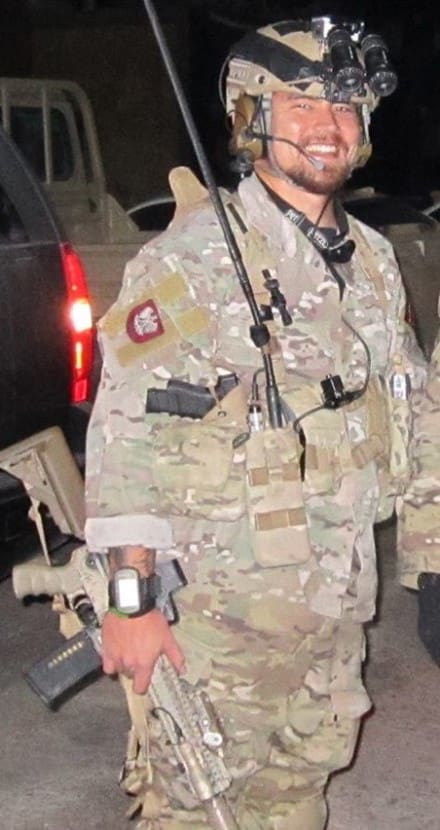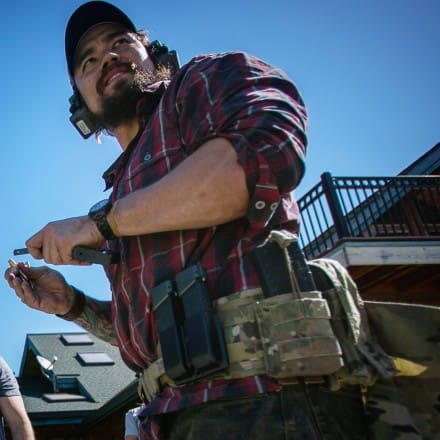In Special Forces, nothing is given and everything is earned. Fresh on a team as an 18 Bravo (Special Forces Weapons Sergeant) and hungry to show how valuable I was to the detachment, I wanted to bring the tactical capabilities of my unit a step up. I had seen other 18B’s running pre-deployment range work ups for their teams, but their programs seemed so vanilla and rudimentary. “Ready up” drills and basic lateral shooting with some depth movement; essentially, comfort food drills.
But we were Special Forces. Why wouldn’t we go beyond what was taught in the regular Army?
I laid out a plan to my Team Sergeant. I could make our guys better tacticians as well as better shooters. Starting with marksmanship from static positions at fixed distances, we would progress into both linear and lateral movement, eventually incorporating weapons manipulation on the move and under stress before applying these skills in “real-world” settings.
Taking my team through that process, I got to see first hand, exactly how other pro-end users learn. I would build on that to continually refine my POI (Program of Instruction), through the rest of my career in the US Army but there was a bigger lesson ahead…
When we got in our first gunfight, there were a number of tactics we had trained for on the flat range that proved impractical in combat. Trying to assume a “correct” marksmanship position took a backseat to necessity when the shooting started. Quick and accurate fire came from shooting in natural positions, not fighting the body’s center of gravity and orienting plates to the threat. In real world direct action missions with simultaneous clears, we discovered coming in high gun meant the M4 could be used to push, pin or drive a threat out of a threshold, whereas in the shoot houses, high gun was frowned upon as something SEALs did.
In combat, that hubris went out the window. We were fighting with rifles inside of rooms, dealing with anywhere from zero to fifty people who we had to immediately identify as a shoot or no-shoot so if something didn’t work consistently or wasn’t repeatable under fire, it got dumped. Immediately. End of story. Successful repeated application of a technique in combat was and is the only thing that counts.
Today, the POI I teach is Fundamentals of Gunfighting vs. Fundamentals of Marksmanship. Marksmanship proved to be the easiest technical element of gunfighting, honed with proven isolation drills and repped out consistently for sustainment. However it is the application of marksmanship, combined with immediate target discrimination and maneuver, that pays the bills. Entering a relative unknown and being able to immediately solve problems is the true hard skill that requires consistent good reps under oversight to improve, and that is the point of all of this. Create a path for improvement as a team and individual – because improving to the point where we kill the enemy and they don’t kill us is the whole reason we train.
– Mike Glover
FieldCraft LLC
Gunfighter Moment is a weekly feature brought to you by Bravo Company USA. Bravo Company is home of the Gunfighters, and each week they bring us a different trainer to offer some words of wisdom.
Tags: Gunfighter Moment, Mike Glover




It is so damn refreshing to see Instructors break the silence and go against the tactical status quo that has been dictated by markets first, and knowledge second. We learned so much from the wars about discarding theory and inferior fighting techniques. Despite the industry’s allergy to credentials, pithy and legitimate viewpoints such as Mike’s will help to recalibrate the transfer of knowledge for serious shooters.
Aaron your recent release on Panteao made for good Friday night learning. Keep up the good work and keep evolving what you’re doing. From an executive protection stand point, we all know where the highest percentage of lethal and non lethal attacks occur.
Thanks Aye!
Common themes throughout these kinds of posts:
Speed is fine, accuracy is final.
Good fundamentals trump fancy footwork.
Oh, and there may actually be a good reason why SEALs do what they do with the high ready position, aside from looking like SEALs.
🙂
The reason that high ready is not taught in SFAUC is that instructors are on the cat walk and there is no ballistic barrier. There is usually a red line painted along the tops of the walls and barrels are not allowed above that point of aim. Master the basics.
There is a whole new generation of gunfighters coming into their own. And they are ringing with them skills that actually work in fights. No more theory.
When i was a team sgt. I would have killed to have my 18B approach me with even a training plan, good to see there are still some good ones who love the profession as opposed to the image. Keep it up man.
What is meant by this: ” we discovered coming in high gun meant the M4 could be used to push, pin or drive a threat out of a threshold, whereas in the shoot houses, high gun was frowned upon as something SEALs did. ” ??
Low ready / muzzle down vs high ready / muzzle up. The SEALs comment is a little army navy rivalry. Army says muzzle down, SEALs are known for muzzle up.
Ah. Thanks
With respect to the Army vs. Navy argument, TC 3-22.9, Rifle and Carbine, dated 5/2016, clearly depicts the high ready on p. 6-11.
6-22. The high ready is used when the Soldier’s sector of fire includes areas overhead or when an elevated muzzle orientation is appropriate for safety (see figure 6-6). The high ready carry is used when contact is likely.
High ready was dropped because all the shoot houses had catwalks and the people on the catwalks (leadership) were pooping their pants at getting flagged. The leadership then decided low ready would be used. It wasn’t a “SEAL” thing. It was an administrative thing.
At certain schools in SF it is still encouraged. At least 10 years ago it was. I used it a lot, was a yuge fan of it, and still am.
It seems you see a lot of slightly older guys vehemently one way or the other. The younger guys, just out, are a lot more “each has a purpose.”
Shrek though, does make one good point about, possibly why the SEALs use it. “Don’t sink the boat.”
And why it’s not so good on a helo.
My old team adopted High gun in the late 90’s, and it served us very well. There is a time and place for everything, but high gun has been unfairly criticized by a lot of people who simply never learned it going through school. Nice to hear some reality.
10 years ago was when it made its come back, for years before that the low ready was the norm. GWOT feedback ended up bringing about its reemergence in SWCS schools. When I attended SFAUC in 00, and SFARTAETC in 04 the low ready was the standard. It was still encouraged up to 2014, and may still be to this day. It meets the test of common sense and is combat proven. Long ago it was frowned upon or outright forbidden for catwalk safety, or partially impeding field of view.
*high ready encouraged until 2014. My bad, changed subject without being specific.
Yep SFARTAETC, the only ones at “low ready” were the guys on the door.
Awesome article. I truly believe every technique is a tool you can pull out when necessary. There is a time and place for everything and professionals knows when and where to use what and have the mental capacity and training. No such thing as never, no such thing as always. Evolve or die.
Well put.
Army – muzzle down – don’t put an ND into the helicopter’s engine.
Navy- muzzle up- don’t put an ND into the host’s hull…
If you want to hit the target you need to apply the basics; point the piece at the target with the proper amount of discrimination that the situation calls for. Don’t disturb that discrimination while pressing the trigger.
‘Advanced’ is being able to do the basics regardless of how exciting the situation is. Or: advanced is being able to dill the basics even though your leg is on fire.